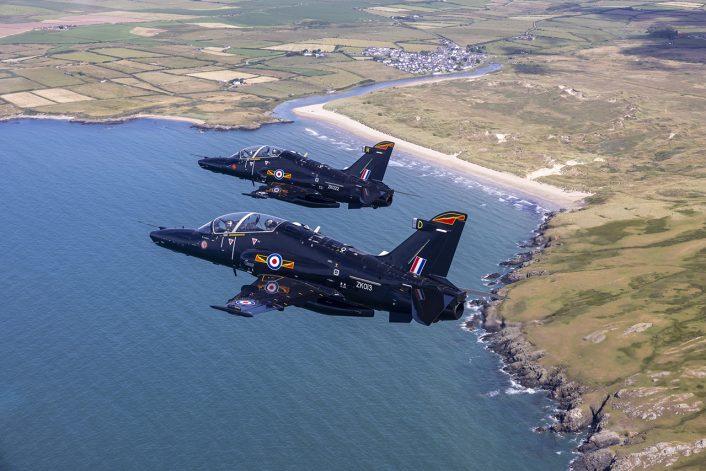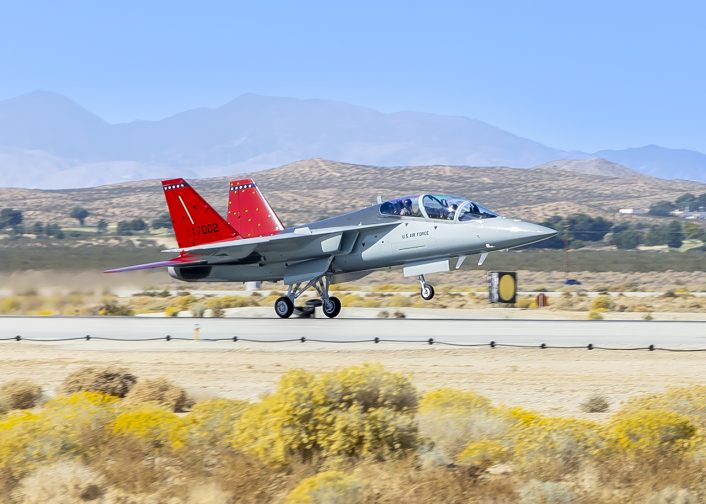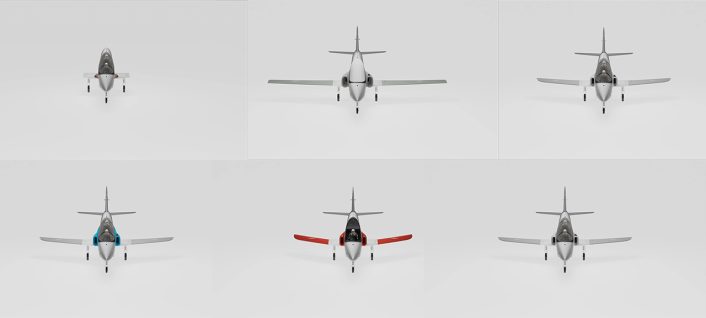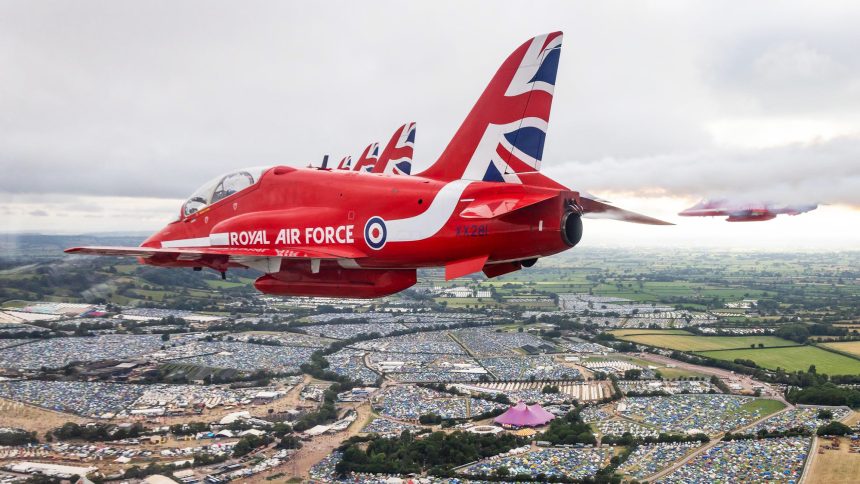Defence minister Maria Eagle confirmed to Parliament that a competition will be opened to replace the venerable British-designed training jet, also used by the Red Arrows display team.
The recommendation to procure a new “cost-effective fast jet trainer” to replace the Hawk was included in the UK Strategic Defence Review, released in early June, but a statement made in Parliament – coinciding with a visit by Prime Minister Keir Starmer to RAF Valley – has become our first confirmation that wheels are in motion on the replacement programme.
Minister of State for Defence Procurement and Industry Maria Eagle, responding to a question from a fellow Member of Parliament (MP), confirmed that “The strategic defence review recommended that the Hawk T1 and T2 be replaced with a cost-effective advanced jet trainer. The future platform of the Royal Air Force aerobatic team is being considered at the same time, and a Royal Air Force programme team is being established to deliver that capability.”
She added, in response to a follow up question from another MP: “I assure him that the competition will welcome any bids from UK-based suppliers.” This confirms that a competition is planned for the selection of an aircraft type.
At this time, the timeframe for this competition to take place is unknown, and is likely to have yet to be definitively confirmed even within the service. The Hawk T2’s previous out of service date (OSD) was scheduled to be 2040, but issues with reliability led to then Chief of the Air Staff, Air Chief Marshal Sir Rich Knighton, saying “Speaking quite frankly, I would like to replace the Hawk T2 as soon as we can, to deliver a more modern, more reliable, greater capacity” in 2024.

Knighton said the armed forces were getting approximately half as much use out of the Hawk T2 airframes than would be desired. Notably, ACM Rich Knighton is now, as of Jun. 27, 2025, next in line to become the UK’s Chief of the Defence Staff (CDS). CDS is the highest ranking member of the UK armed forces, and reports directly to the Secretary of State for Defence and the Prime Minister. Knighton will assume this role from September 2025.
During the Prime Minister’s aforementioned visit to RAF Valley, home of the Royal Air Force’s Hawk T2s, he mentioned that discussions had taken place with personnel at the station regarding replacement aircraft.
We asked the Prime Minister: will Hawk jet training be revised – and are replacements on the horizon?
Sir Keir Starmer shared his thoughts during a visit to RAF Valley, where he met with trainee fighter pilots.
🔗👉 https://t.co/44c0VtZa3Q pic.twitter.com/LvpufKiXqh
— BFBS Forces News (@ForcesNews) June 30, 2025
The Hawk T2 has been used as an advanced jet trainer for RAF pilots since 2012, and fully assumed all duties in this role in 2016 with the disbandment of Hawk T1-equipped 208 Squadron. The T1 remained in service with aggressor squadrons 100 Squadron and 736 Naval Air Squadron, as well as the RAF Centre for Aviation Medicine (RAFCAM) until 2022.
From 2022, all Hawk T1 operations were folded into the Red Arrows, with the team now also responsible for all remaining Hawk T1 testing, trials, and training. Hawk T1’s current planned OSD is 2030, and the service believes there is sufficient airframe life among the fleet to see them through to this date.
Hawk T1s first entered RAF service in 1976. The Hawk T2, internally designated by the manufacturer as Hawk 128, took the basic Hawk design and built on export variants that had been produced for a number of nations to create a modernised jet trainer more reminiscent for pilots of current frontline aircraft like the Typhoon. Only around 10% of parts are common between the two variants.
Contenders
The market for advanced jet trainers has become more and more saturated as individual nations have taken on the task of producing their own home-grown designs, which sit along with products from industry giants in the United States and Europe.
In the U.S. Air Force, the jet trainer role currently fulfilled by the Northrop T-38 Talon will be assumed by the Boeing-Saab T-7A Red Hawk. No assessment of the options available would be complete without the Red Hawk’s inclusion, although a UK adoption would seem unlikely for a number of reasons. Aside from delays pushing back full entry into service, the aircraft’s use of an afterburning turbofan to provide the USAF requirement of supersonic flight adds significant expense and complexity to the maintenance and operation of the aircraft.

The RAF, along with many other air arms, have shied away from this level of performance in their jet trainers. Without a solid UK partner, it is also unlikely any significant part of the production process could be completed locally in the UK, making it a more unattractive prospect from political and economic standpoints.
Powered by the same F404 engine, the Turkish Hürjet has nonetheless seen export success in Europe with Spain signing on for 24 of the jets. Growing defence industry cooperation between Turkey and the UK makes this a more interesting contender, though, unlike Spain, the UK could not rely on existing experience and supply chains for the F404 engine, which is also used in Spain’s F/A-18 Hornets.
Leonardo offers both the M-345 and M-346 trainers. The M-345 is intended as a more basic trainer, while M-346 offers greater performance with twin engines and an improved ability to be employed as a lightweight frontline fighter. Leonardo has a significant presence in the UK, with Leonardo Helicopters still operating from the Yeovil facility historically used by Westland, and then AgustaWestland, so there is a more significant prospect of UK production involvement to some degree.
An M-345 aircraft in fact arrived at MoD Boscombe Down, the UK’s centre for military aircraft trials and testing, in late May. Leonardo informed us that Qinetiq environmental test center has been selected by Leonardo as most suitable test facility for M-345 aircraft final qualification for operation under extreme environmental configuration in dedicated hangars or laboratories.
Arguably, the M-346 would be the more suitable offering for the RAF, already being used in Italy as a lead-in trainer for the Typhoon and F-35. RAF pilots have already undertaken training courses using the aircraft as part of the International Flight Training School (IFTS) in Decimomannu, Italy. Additionally, as there is the requirement to replace the aerobatic aircraft of the Red Arrows display team, the RAF might note the reversal of the Italian Air Force’s decision to equip their Frecce Tricolori team with M-345s, and instead opt for the M-346.
Enter Aeralis
Aeralis, a British company, is seen as a strong contender to build the Hawk’s successor. The company has yet to produce an aircraft, but has been working on its Advanced Jet Trainer proposal with UK Government funding for a number of years. Aiming for a modular design, Aeralis hopes that a common aircraft design could be used in a variety of roles with relatively minor airframe reconfigurations allowing tailoring for different tasks.
However, with no prototype yet in flight, a secure order received now would still likely not result in operational airframes before the end of the decade.

Where Aeralis has a strong edge is in its provenance as an entirely British airframe, meaning all design, development, and production could be kept within the UK. For this procurement, this is not only important from an economic and political standpoint, but as a point of prestige and advertising for British industry – the Red Arrows have always flown British aircraft and acted as a global ambassador for the British aerospace sector.
There is the potential for a maritime variant compatible with the Queen Elizabeth class aircraft carriers to be developed. This would most likely be a catapult and arrester wire compatible design, taking advantage of proposed modifications to the carriers to allow the operation of a greater variety of unmanned platforms.
While these modifications are unlikely to result in a CATOBAR layout capable of sustained operations with heavily laden carrier aircraft like the F-35C Lightning II, the Advanced Jet Trainer’s size and weight would likely be more comparable to larger types of drones.
The RN has ambitious plans for the QEC aircraft carriers and the Future Maritime Aviation Force (FMAF)https://t.co/CoHLjV4rXN pic.twitter.com/OllUggo3km
— Navy Lookout (@NavyLookout) June 3, 2023
Aeralis has agreements in place with a number of leading industry partners in the UK, and has earmarked several locations for potential production facilities. Gosport, near Portsmouth, and Prestwick, Scotland, are two notable contenders receiving media attention. Investment within the UK will present a more favorable case to the Treasury, as it means although upfront costs may be higher there is a higher chance of the money staying within the UK’s economy.
All of these factors, and more, will need to be considered by the RAF programme team ahead of the official release of requests for proposals and tenders, which will detail the exact requirements more fully.









